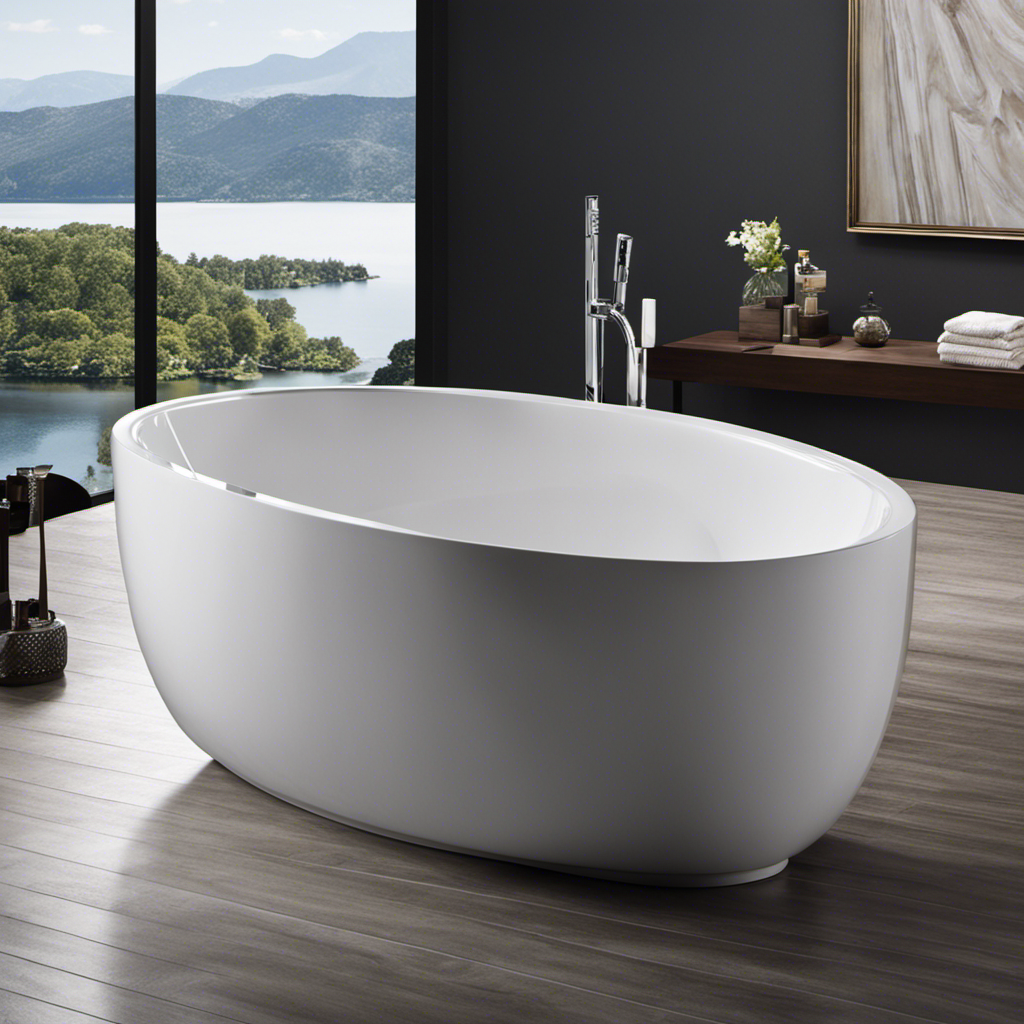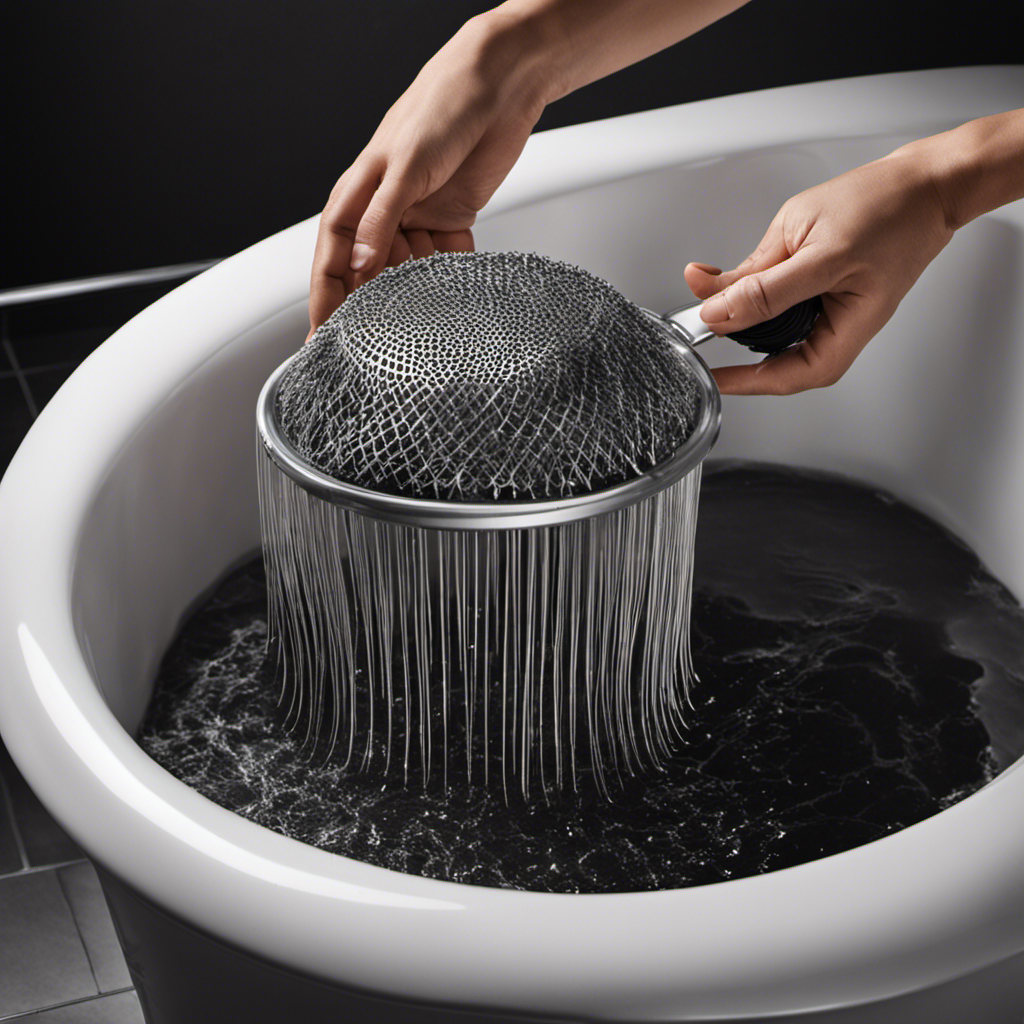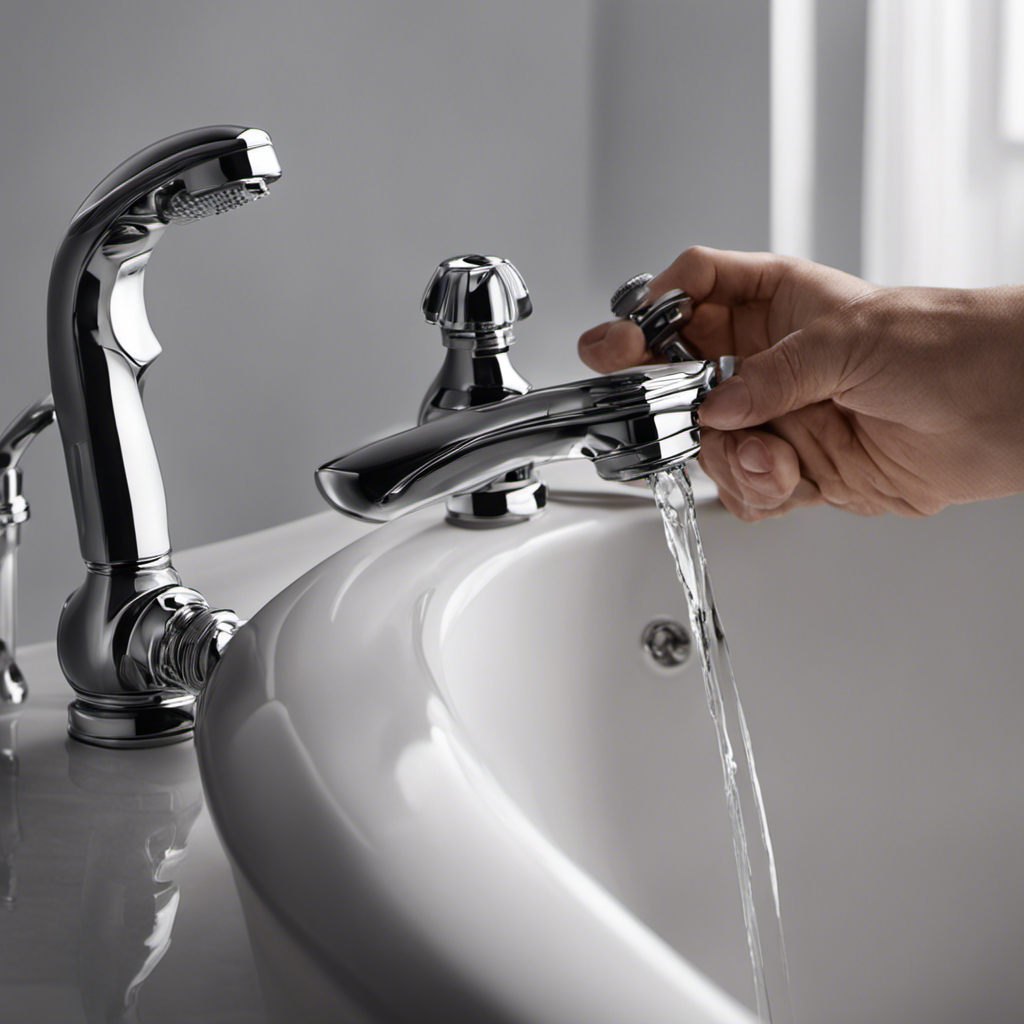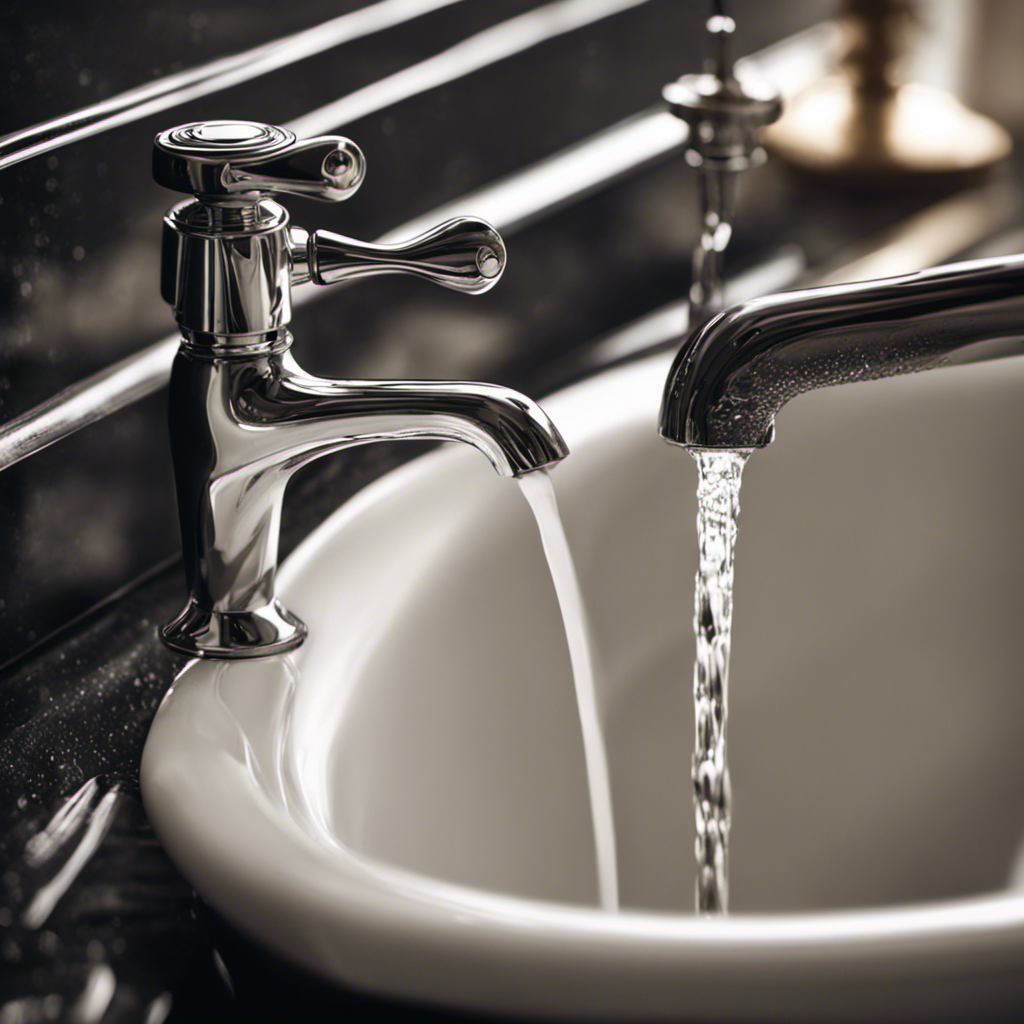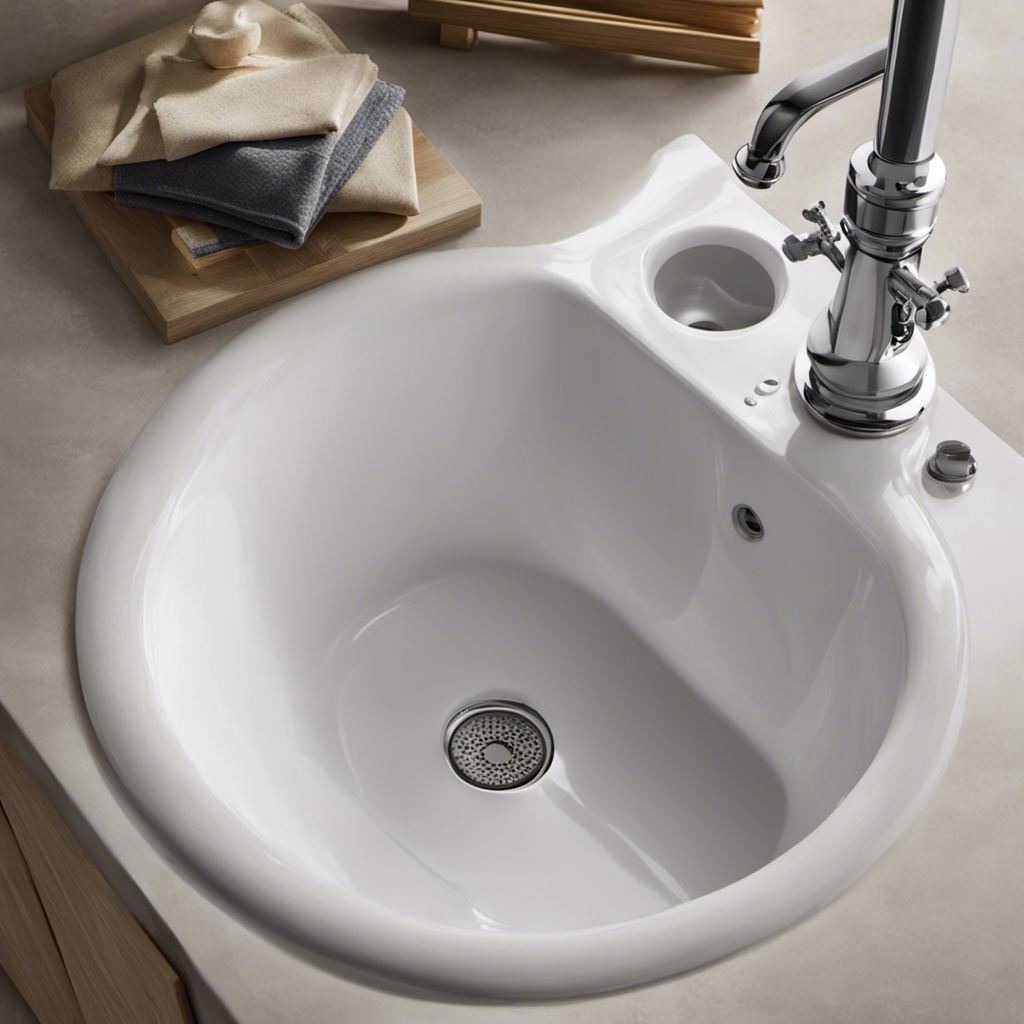I gotta admit, there’s something truly relaxing about soaking in a bathtub at the end of a long day.
But have you ever wondered exactly how much water your standard bathtub can hold? Well, lucky for you, I’ve got all the details you need.
In this article, we’ll dive into the world of bathtub measurements and explore factors that can affect their water capacity.
So, buckle up and get ready to learn just how many gallons of water your beloved bathtub can hold.
Key Takeaways
- Standard bathtubs typically hold around 40-60 gallons of water.
- Freestanding tubs are gaining popularity for their sleek and modern look.
- Bathtub measurements are crucial for determining water capacity.
- Factors such as shape, size, depth, materials, and water pressure affect water-holding capacity.
The Standard Bathtub: An Overview
The standard bathtub typically holds around 40-60 gallons of water.
When it comes to bathtub materials, there are several options to choose from. The most common ones include acrylic, porcelain-enameled steel, and cast iron.
Acrylic bathtubs are lightweight, durable, and come in a variety of shapes and sizes.
Porcelain-enameled steel bathtubs offer a classic and timeless look, while being resistant to stains and scratches.
Cast iron bathtubs are known for their durability and heat retention properties.
In terms of bathtub design trends, freestanding tubs are gaining popularity for their sleek and modern look. They can be placed anywhere in the bathroom, creating a focal point.
Now that we have an overview of the standard bathtub and the various materials and design trends, let’s move on to understanding bathtub measurements.
Understanding Bathtub Measurements
To understand bathtub measurements, you’ll want to know how much water a standard tub can contain. Determining the water volume of a bathtub is crucial for filling it up comfortably without the risk of overflowing. Let’s take a look at the dimensions of a standard bathtub and how they correlate to the water volume.
| Bathtub Dimensions | Length (inches) | Width (inches) | Depth (inches) |
|---|---|---|---|
| Standard 1 | 60 | 30 | 15 |
| Standard 2 | 70 | 32 | 16 |
| Standard 3 | 72 | 36 | 18 |
Calculating the Capacity of a Standard Bathtub
Calculating the capacity of a standard bathtub can be done by multiplying its length, width, and depth. To determine the volume of water a bathtub can hold, start by measuring the length, width, and depth. Once you have these measurements, simply multiply them together.
For example, if the length is 5 feet, the width is 3 feet, and the depth is 1.5 feet, the calculation would be: 5 feet x 3 feet x 1.5 feet = 22.5 cubic feet. To convert this to gallons, you would multiply the cubic feet by 7.48 (since 1 cubic foot is equal to 7.48 gallons), resulting in a bathtub capacity of approximately 168 gallons.
Understanding how to calculate the water volume of a bathtub is essential for determining its capacity. Now let’s explore the factors that can affect bathtub water capacity.
Factors Affecting Bathtub Water Capacity
If you want to understand what affects the capacity of your bathtub, factors such as the shape, size, and depth are important to consider. These factors play a significant role in determining how much water your bathtub can hold.
Here are some key points to consider:
-
Shape: The shape of your bathtub can greatly impact its water capacity. Bathtubs with straight sides and flat bottoms tend to hold more water compared to those with curved or sloping sides.
-
Size: Obviously, larger bathtubs can hold more water than smaller ones. The dimensions of your bathtub, including its length, width, and height, will determine its overall water capacity.
-
Depth: The depth of your bathtub also affects its water capacity. Deeper tubs can hold more water, allowing for a more immersive bathing experience.
Considering these factors will help you choose a bathtub that suits your needs and preferences while maximizing its water-holding capacity.
Common Bathtub Sizes and Their Water Holding Capacity
Common bathtub sizes and their water-holding capacity can vary depending on factors such as shape, size, and depth. The materials used to construct a bathtub, as well as the water pressure in your home, also play a role in determining how much water a bathtub can hold. To give you an idea of the water capacity of different bathtub sizes, I have provided a table below:
| Bathtub Size | Length (inches) | Width (inches) | Depth (inches) | Water-Holding Capacity (gallons) |
|---|---|---|---|---|
| Standard | 60 | 30 | 14 | 40 |
| Soaking | 72 | 36 | 20 | 60 |
| Whirlpool/Spa | 60 | 32 | 18 | 50 |
It’s important to note that these capacities are approximate and may vary slightly depending on the specific bathtub model and design. Additionally, bathtub materials can affect water-holding capacity. For example, acrylic and fiberglass tubs tend to have higher water capacities compared to cast iron or steel tubs. Finally, the water pressure in your home can also influence the amount of water a bathtub can hold. Higher water pressure can potentially increase the water capacity, while lower water pressure may result in a lower water-holding capacity.
How to Measure the Water Capacity of Your Bathtub
When it comes to accurately measuring the water capacity of your bathtub, there are a few key points to keep in mind.
First, it’s important to use a reliable measuring tool, such as a measuring cup or a gallon jug, to ensure precise measurements.
Secondly, you’ll want to calculate the water capacity by multiplying the length, width, and depth of your bathtub, taking into account any irregular shapes or slopes.
Lastly, don’t forget to account for the displacement of water when you or any objects are in the tub, as this will affect the overall capacity.
Accurate Bathtub Water Measurement
To accurately measure the amount of water your bathtub holds, you can use a measuring container and fill it up to the brim. This will give you an idea of the bathtub’s water capacity. Here are some steps you can follow to ensure accurate measurement:
- Choose a measuring container that has clear markings for easy reading.
- Place the measuring container inside the bathtub and make sure it is secure.
- Slowly fill the bathtub with water, making sure to stop when it reaches the brim of the measuring container.
- Take note of the water level on the measuring container.
- Repeat the process a few times to ensure consistency and accuracy.
- Calculate the average water level from your measurements to get a more accurate estimate of your bathtub’s water capacity.
Calculating Water Capacity
In order to determine the water capacity of a standard bathtub, calculating water volume is essential. To do this, you need to know the dimensions of the tub. Start by measuring the length, width, and depth of the bathtub. Multiply these measurements together to find the volume in cubic inches. Then, divide the result by 231 to convert it into gallons, as there are 231 cubic inches in a gallon. This will give you an accurate estimate of how many gallons of water your bathtub can hold.
Calculating water volume is not only useful for determining the capacity of your bathtub, but it can also help you understand the bathtub water efficiency. By knowing the exact volume, you can make informed decisions about water usage and find ways to conserve water, whether it’s through shorter showers or adjusting the water level in the tub.
Being mindful of water efficiency not only benefits the environment but can also save you money on your water bills.
Tips for Conserving Water in Your Bathtub
If you want to conserve water in your bathtub, try taking shorter showers instead. By reducing the time spent in the shower, you can significantly decrease your water usage in the bathroom.
Here are some additional tips for bathtub water conservation:
- Install a low-flow showerhead: This can reduce water flow by up to 50% without compromising water pressure.
- Use a bathtub water diverter: This device allows you to redirect water from the faucet to a bucket or container, which can then be used for activities like watering plants or flushing toilets.
- Plug the drain while filling the tub: This prevents water from being wasted while you wait for it to reach a desired temperature.
Conclusion
In conclusion, calculating the capacity of a standard bathtub is crucial for understanding how many gallons of water it can hold. Factors such as depth, width, and length all play a role in determining the water capacity.
By measuring your own bathtub and considering water conservation tips, you can make informed decisions about your water usage.
So, next time you hop into your heavenly haven, remember to be mindful of the marvelous amount of water your bathtub can hold!

